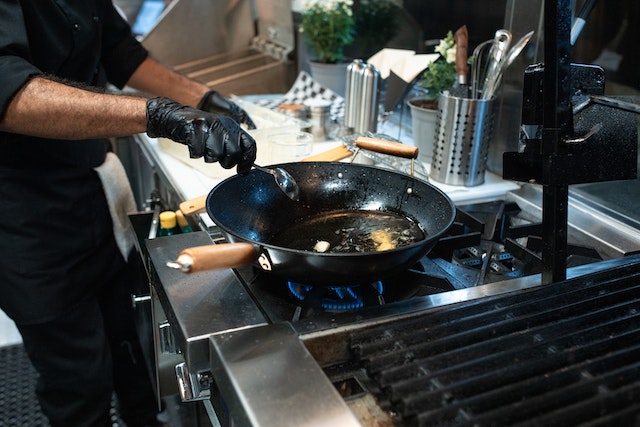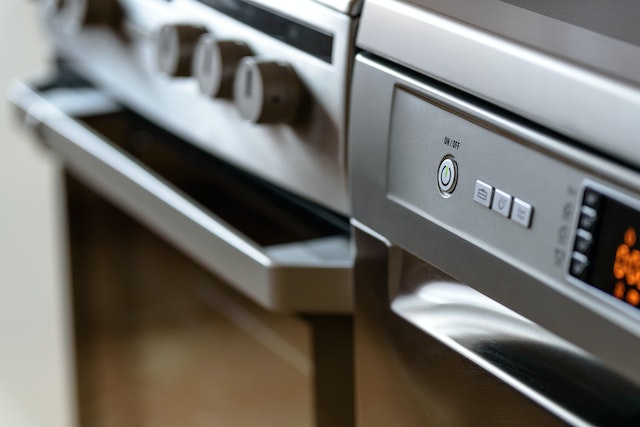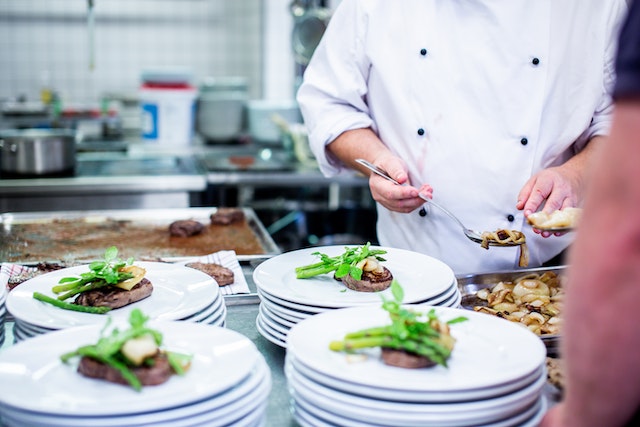In a busy restaurant kitchen, the exposure to safety risks is high. The limited space can operate smoothly when safety systems are in place. Given that the kitchen can contain several types of equipment that can be a potential hazard, such as deep fryers, grills, and knives, it’s important to prioritize a safe workspace area.
Restaurant owners have to deal with so many things in the food business, they don’t need to be further stressed by handling the heavy expense of worker’s compensation. Restaurants can implement several preventive measures to curtail hazard incidents and transform the kitchen into a safe space for working.
Here are three vital areas to look at and reduce the hazard possibilities:
Kitchen Equipment
The various cooking tools and equipment that a kitchen holds to perform heating, frying and chopping of ingredients can present a hazard if a person does not remain cautious.
- Proper use of grills, fryers, and cookers - Ensure that the employees are trained to handle the proper cooking equipment the way it’s created to be used. Safety is an important factor in eliminating kitchen hazards.
Best practices should be followed when operating the fryers and grills, such as keeping a safe distance and checking the right temperature settings. Sufficient protective coverage should also be worn when handling the cooking equipment.

- Equipment for the safe and efficient disposal of used cooking oil - Used cooking oil must be disposed of properly. To avoid accidents, limit having your employees carry a pot of oil.
Investing in an automated used cooking oil recycling system is advisable to avoid liability costs. This restricts the staff from dealing with hot used cooking oil.
- Practice good knife etiquette - Knives are intended to be sharp for maximum function and should be maintained as such. When the blades become dull, they won’t cut through the food and may land on your finger.
As an employer, you should train your staff to use the right knife. They should also store them properly once they’re done using them. Knives should always be angled downward when carried.
- Provide clear warnings and ample training - To prevent hazardous accidents, sufficient training should be provided to the staff when utilizing the equipment in the restaurant. Specific warnings should be released about improper handling.
Remind them to keep loose clothing away from the machines. Guidelines should be provided and made available through safety manuals of the kitchen equipment. They should be placed in a visible area so the staff can use them as references.
Signs should be posted close to the equipment with brief warnings about improper use, highlighting the dangerous parts.

Employee Personal Protective Equipment (PPE)
Employees should wear protective gear when performing their work to limit hazards.
- Issue several supplies of protective gear - Make it mandatory for the staff handling cooking equipment to don heat-resistant clothes. Everyone should also wear slip-resistant shoes with no or low heels for stability in case there are slippery spots on the kitchen floor.
For sanitation and protection, gloves and hairnets are necessary for staff holding the food and equipment. You should also provide potholders to protect the hands when required to hold hot objects. Minimal or no jewelry must be a recommended policy for your kitchen staff.
- Purchase safety tools - Invest in tools that create a safe environment so your employees can be more efficient in their jobs. Stepladders and tools must be available to reach high areas or shelves. Provide cleaning tools such as mops, brooms, and dustpans so quick cleanup can be done in case there’s a mess.
Kitchen Design and Layout
Even the kitchen design must be well-thought-out since it can help reduce accidents. With a space that can become crowded during the busy working period, it helps to have a hazard-free layout.
- Place quality lighting - Good lighting is vital in a busy kitchen and prevents mishaps. All areas of your kitchen must be installed with good lighting, especially those that have stairs and narrow parts.

Storage rooms should have adequate lighting so it’s quicker to find the stocks and supplies needed. Lighting is also essential to prevent hazards when walking and prevent one from having an accident or causing an accident.
- Put up detailed signs - People can sometimes forget to be cautious when they’re busy. It’s important to post safety reminders through signs. Floors that have been recently mopped should have a wet floor sign. A post that says to walk instead of running can make someone slow down their pace and promote safety.
A lot of bumping can happen around the doorways so it’s critical to put up signs announcing the direction of the door opening. In addition, you must also install signs for fire alarms, fire extinguishers, and fire exits in case of a kitchen emergency.
- Carefully think over your kitchen layout - Given that a restaurant kitchen is already crowded during the busy peak hours, it’s vital to have an efficient layout. This can limit accidents since the kitchen flow makes sense.
Separate your kitchen staff and ensure that only the required people in the kitchen stay there to minimize overcrowding and bumping into each other. Doorways should also be free from debris. In addition, boxes and equipment can become barriers when placed on the floors or walls. They should be stored properly to prevent hazards.
Designate an entrance and exit in your kitchen area. Determine your fire exits and orient your staff on what to do and where to head when a fire occurs.
Bottom Line
Practicing these recommendations in your commercial kitchen can drastically reduce confronting hazards. It’s best to be proactive and limit the risks to keep your employees safe and create a good working environment.
Are you looking for a dependable professional company to perform grease trap pumping and oil recycling in your commercial kitchen? If yes, get in touch with Greasecycle today at (919) 817 6792!
We offer restaurants with clean and proper oil collection containers to promote a safe and sanitary environment. Restaurant owners can focus on their business while we handle essential services, such as oil recycling, grease trap pumping & cleaning, and grease trap waste processing.